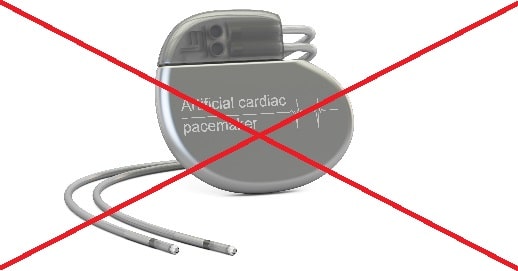Many items cannot be cremated, such as:
- Metal items, except titanium joints which are fine
- Certain items of clothing, including synthetic clothes that may release harmful gases or chemicals when burned
- Pacemakers, as they can explode
- Radioactive implants for cancer treatments, as they can be harmful to those conducting the cremation
Chances are you will choose to be either cremated or buried after your death. According to the National Funeral Directors Association (NFDA), 50.2% of funerals were cremations in 2016, surpassing the 50% mark for the first time. Some states are more in favor of cremation than others.
If you choose cremation, you can take various things with you. When my dad died, he was placed in his casket wearing his new bathrobe (he’d only just gotten it and loved it).
He also went with lots of birthday cards as he passed just four days before his birthday. We didn’t know what to do with them, so we decided it would be nice if they went along with him. Then my young niece made a papier-mache bowl as a gift, so in that went too…
Looking back, I laugh as it must have been pretty crowded in there! He would have loved it, I’m sure.
I didn’t come up against any issues concerning items that could not be cremated, but I know there are many things that can’t be. So, if you want to know more, you are in the right place to find out. It’s better to know before you need to decide on this for yourself or someone else.
Certain Clothes Cannot Be Cremated

You could request to go into your casket in your birthday suit if you wanted. I’ve got a fancy-dress outfit of a cow, and if I go before my other half, I want them to put me in it. I know it would bring a smile on a tough day if it came to that, even if no one else knew what I was wearing in there.
However, some items of clothing wouldn’t be ideal. For example, metal items cannot go into the casket. Most zippers are made from metal, so anything like that – a pair of jeans, for example – would be out of the question.
Synthetic clothing is also off the list. Any item of clothing made from synthetic fibers could lead to chemical emissions that could potentially be harmful to those nearby during the cremation.
In contrast, anything made with natural fibers is fine. Think of a cotton tee shirt or a favorite woolen jumper, for example.
There May Be Hazardous Items Inside the Body Too

This might surprise you. However, the most obvious example of this would be a pacemaker.
Any type of implant like this that runs on batteries can explode if it is exposed to intense heat. In some cases, the pacemaker is thrown away after removal. However, it is possible to donate the pacemaker to charity, so that it can go on and help someone else.
If you are arranging a funeral for a loved one who had a pacemaker, make sure you inform the funeral director of this. It is usually their job to remove it while attending to your loved one and readying them for the service. Once the casket reaches the crematory, anything that could not be cremated should have been removed.
Other items that cannot go through the cremation process include radioactive implants. These are used for brachytherapy, a type of radiation therapy that targets cancer cells, doing so from inside the body rather than being directed from outside the body. Burning such implants would be dangerous.
Jewelry, Wedding Rings, and Watches Are Removed

It is common for the decedent to be placed in the casket wearing a wedding ring or other jewelry that the individual was known to wear in life. If there is a visitation or open casket, it would be unusual not to see those items in place.
However, in the US, removable items made from metal are not generally cremated with the body. This means that while the individual can be dressed in a favorite outfit complete with a wedding ring and even a favorite watch, those items won’t stay there.
Once the funeral service is over, any items inside the container or casket that cannot safely combust inside the cremator are removed. Everything else that can combust without causing any danger – such as the cards my family placed in with my dad – can remain. Arrangements are then made to make sure those items are returned to the family.
Metal Hips Are Removed After Cremation

I’ve mentioned metal already, but there are items inside the body that do go through the cremation process and are removed after it is complete. Metal hips and knee joints are typical examples of this. Pins used to fix broken bones also survive the process.
If you’re wondering why these metals survive cremation when all metals do melt, there is an answer. Before a body goes into the cremation chamber, the staff heat the chamber to 1,800 – 2,000 degrees Fahrenheit.
Titanium – the metal most often used for hip replacements, new knee joints, and other similar items – only melts when the temperature reaches over 3,000 degrees Fahrenheit.
When the cremation process is complete, staff will remove the contents left behind. Anything combustible will be gone or reduced to ash. Any metal inside the body that did not reach a high enough temperature to melt will remain in the chamber.
The staff run a magnet over the remains to remove smaller pieces that may not otherwise be visible. Any larger pieces, such as that hip replacement, are removed by hand (using tools as they’re still likely to be hot).
In some cases, the crematoria may send these items to a metal recycling company. In other cases, families have been known to ask for – and keep – an implant.
Some States Have Different Rules and Laws
The Cremation Association of North America website confirms that metal items cannot be cremated, whether those items are part of the casket or put inside with the decedent.
The site also confirmed that legal requirements from state to state – and even from one jurisdiction or locality to another – can vary. This means it is important to check whether you can have certain items cremated with your loved one – or indeed with you if you are planning for your own funeral in advance. And that’s a smart thing to do, by the way.
You can see that even if you did things a certain way in one state and then moved to another, you may not be able to follow those same rules the next time the situation arises. Hence why I recommend you check the local laws – something the funeral director can help you with.
Different Countries Have Different Rules Too
It’s interesting to discover that in the United Kingdom, for example, the decedent can keep their wedding ring on – along with any other preferred jewelry. In the UK, once a person is sealed inside the casket (or coffin, as it’s known there), it is not reopened. The person is then cremated along with the casket and everything inside it.
So, just as rules and laws vary between American states, they also vary between countries that use cremation after death. Of course, the caveat about removing implants and pacemakers still stands, but if nothing dangerous is in there, the casket is closed and ready to go.
Cremation Caskets are Combustible

In the US, the casket to be cremated cannot include anything made from metal. Some people choose an ornate casket for the funeral and then have the body transferred to a simpler one made from basic wood or even cardboard for cremation. This means you could rent a casket for the funeral – a cheaper and more sensible choice for some.
You recall I mentioned how different things are in the UK and other countries, though. In the UK, a regular casket (coffin) can have metal handles and they’ll be cremated too, although they are usually left behind and removed once the process is complete.
Bottom Line – If in Doubt Ask
The above information should help you if you ever need to think about a loved one and what to have them dressed in for their casket. However, I know that funeral directors are very considerate and knowledgeable people.
If you have a question about anything that might go into a casket – even out of curiosity for when your own time comes – go ahead and ask. They will also know the relevant laws and considerations in your area.
Knowing the dos and don’ts of cremation and what is safe to go through the process (or not) is certainly an education. Hopefully, knowing the answers may help you make those decisions if you ever need to in future.

Resources
https://beyond.life/help-centre/arranging-a-funeral/what-can-you-put-in-a-coffin/
https://www.thegardens.com/can-things-placed-casket/
https://www.cremationsocietyofamerica.com/direct-cremation-dressing-your-loved-one/
https://www.everplans.com/articles/all-you-need-to-know-about-cremation-caskets
https://www.cremationassociation.org/page/CremationProcess
https://scattering-ashes.co.uk/help-advice/funeral/cremation-faq/
https://cremationinstitute.com/cremation-process/
https://www.abc.net.au/news/2019-06-15/the-unique-items-people-are-buried-with/11176586
https://collier-law.com/blog/cremation-what-happens-to-the-metals-in-your-body/

